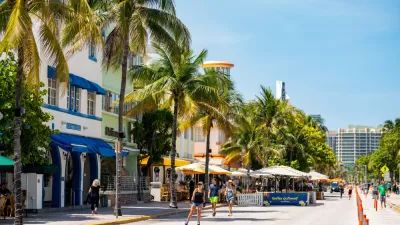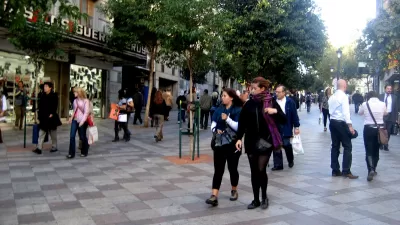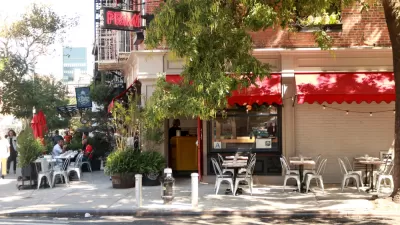Forget razor blades in apples. Henry Grabar argues the biggest threat on Halloween is much more mundane.

In an op-ed for Slate, Henry Grabar uses the annual parent panic over Halloween dangers to highlight another very real and present danger to children: cars. A CDC study showed that children are four times more likely to be killed on Halloween than on any other day.
According to an analysis in the Washington Post, 54 kids were killed by cars on Halloween between 2004 and 2018, making it by far the deadliest day of the year; no other day of the year saw more than 30 deaths across those 15 years, and most saw far less.
Grabar notes that the chance of getting struck by a car is still small, and “no more reason to keep a kid at home on All Hallows’ Eve than fear of fentanyl-flavored Skittles.” But the sharp increase in risk still warrants action, this year in particular. Grabar explains this is in part because “this Halloween falls during a historic surge in bad driving.” On top of that, pandemic-era open streets programs and other experiments with opening up more space to pedestrians have primed cities for changes.
Grabar argues for making Halloween a ‘slow driving’ day, “with trick-or-treat destinations closed to traffic, and everyone else on high alert.” Pointing out that children are known to “have a sixth sense for good design, such as generous lighting, a walkable urban fabric, calm streets, and sidewalk-facing architecture, that adults sometimes struggle to enumerate,” Grabar believes the “trick-or-treat test” should be applied to more of our streets, year-round.
FULL STORY: Ban Cars on Halloween

Alabama: Trump Terminates Settlements for Black Communities Harmed By Raw Sewage
Trump deemed the landmark civil rights agreement “illegal DEI and environmental justice policy.”

Planetizen Federal Action Tracker
A weekly monitor of how Trump’s orders and actions are impacting planners and planning in America.

Why Should We Subsidize Public Transportation?
Many public transit agencies face financial stress due to rising costs, declining fare revenue, and declining subsidies. Transit advocates must provide a strong business case for increasing public transit funding.

Phoenix Announces Opening Date for Light Rail Extension
The South Central extension will connect South Phoenix to downtown and other major hubs starting on June 7.

How Housing as a Financial Product Harms Communities
Institutional buyers who treat housing as an investment product become disconnected from the impacts of higher rents, displacement, and housing instability.

Blinded by the Light: When Brighter Headlights Decrease Safety
Bright LED headlights can create glare and reduce visibility for other drivers and pedestrians.
Urban Design for Planners 1: Software Tools
This six-course series explores essential urban design concepts using open source software and equips planners with the tools they need to participate fully in the urban design process.
Planning for Universal Design
Learn the tools for implementing Universal Design in planning regulations.
Caltrans
Smith Gee Studio
Institute for Housing and Urban Development Studies (IHS)
City of Grandview
Harvard GSD Executive Education
Toledo-Lucas County Plan Commissions
Salt Lake City
NYU Wagner Graduate School of Public Service





























